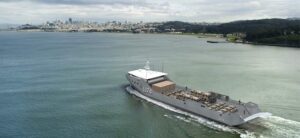
The Navy issued a Request For Information (RFI) for the preliminary design (PD) for the Light Amphibious Warship (LAW) on Oct. 16, revealing more specifications for the ship. The solicitation said the Navy is issuing this RFI “as a means of conducting market research to identify industry feedback” on specification documents. The Navy noted the LAW program is “soliciting Preliminary Design (PD)/Contract Design (CD) for the ship class. It is the intention of the Government to award multiple contracts pursuant…

 By
By 











